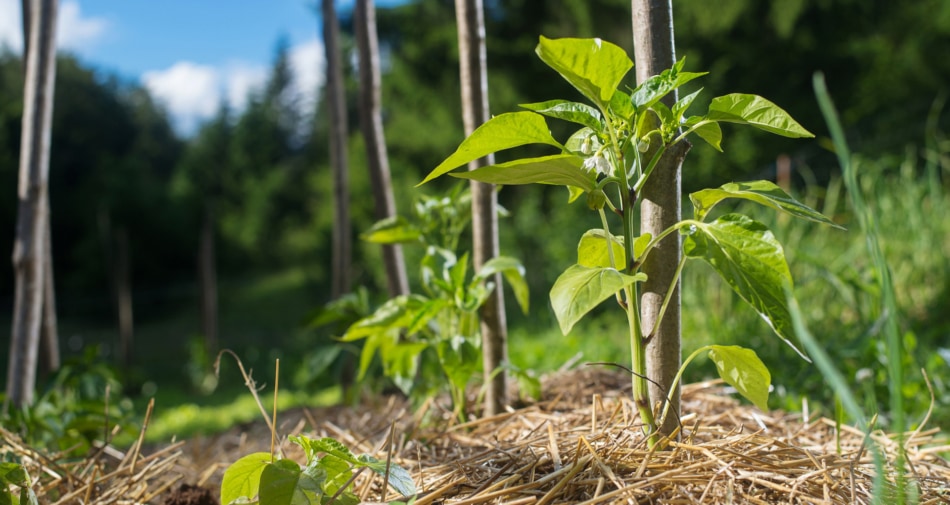How To Keep Your Garden Thriving During a Heatwave
While most crops can withstand the occasional heatwave with little detriment, extreme heat for prolonged periods can do irreparable damage. These strategies can help keep your garden thriving when the mercury soars.

Soaring temperatures often send thriving gardens to a screeching halt, catching even the most experienced gardeners off guard. While most crops can withstand the occasional heatwave with little detriment, extreme heat for prolonged periods can do irreparable damage. If you are feeling the effect of heat and drought, your plants most likely are as well. So how do you keep your plants from permanently surrendering to a heatwave? It helps to have a triage plan in place to offset the heat and keep your garden chugging along.
Strategies To Protect Your Garden from extreme Heat

Water, Water, Water
As temperatures rise, it’s important to step up your watering game. However, how much is too much? When is the best time to give plants their daily drink? There are no cut-and-dry answers to heatwave watering; needs vary from plant to plant. But the key is to focus on maintaining constant and steady moisture levels. Expect your garden to need twice as much water during periods of extreme heat.

Plant Rx: Hand watering, soaker hoses, or some form of an irrigation system are all viable choices. Water your plants deeply, and don’t let your soil become bone dry before unwinding your hose again as all that dehydrating and rehydrating can have an ill effect, leaving plants discolored and unable to rebound.
Water plants in the morning, when temperatures are cooler and check them again by mid-day. If they are droopy, they need more water. Check the soil down about 8″ deep: it should be moist all the way through, but not wet. If it’s dry, you will need to water more. If it’s wet, water less often. It’s also important to note that container plants will dry out more quickly than ones in the ground. How often they will need to be watered will depend on the plant and the size of the container.
Avoid watering late in the day unless it is your only option. If plants remain wet through the night, they are more prone to slugs and fungal and bacterial diseases.
Water conservation is usually a concern during a heatwave, so using water wisely is imperative. Check out our helpful tips for conserving water while growing beautiful gardens.
A Note About Watering Lawns

When watering lawns, it is best to water thoroughly once a week (or more frequently in extreme heat) rather than to set your sprinkler for light daily watering. Deep watering helps yield deeper roots and healthier grass. Light, daily watering encourages shallow root growth, leaving grass more vulnerable to heat and drought. It is also best to avoid fertilizing lawns when temperatures are high, which can damage your lawn. Hold off until September when temperatures have cooled.
Mulch

Applying mulch is the first line of defense for your plants against hot weather. Mulch protects soil from direct sun exposure, keeping the surface soil moist and reducing evaporation.
Plant Rx: To help insulate the soil and prevent the roots from getting too hot and dry, apply 2-4 inches of mulch to your garden and around young trees and shrubs (too thick of a layer will prevent rainwater from reaching the soil underneath). Light-colored mulches help to reflect sunlight and maintain cooler soil. If you’ve mowed your lawn, leave grass clippings to dry out for a few days, allowing them to turn a light brown, then use them as a mulch. Straw and shredded leaves also work well.
Hold Off On Fertilizing

Unless you are keeping your soil moist and not letting it dry up, it’s best to withhold fertilizer. During very high temperatures plants go semi-dormant, requiring fewer nutrients while in survival mode. Built-up fertilizer (that isn’t washed away from rainwater) can burn plant roots.
Plant Rx: To avoid plant damage, wait until the weather cools before applying fertilizer.
Tackle the Weeds

It’s best to keep up with weeding during extreme heat and drought. Weeds are looking to survive, too, and they’re taking your plants’ water to grow. While the last thing you may feel like doing is weeding when it’s not, try to keep on top of it. Is there such a thing as good weeding weather?
Choose the Right Soil

Soil with a healthy amount of organic matter (about 5-9%) can make a difference in its ability to retain water. Gardens full of beneficial soil organisms also help plants tolerate periods of drought.
7 Alternatives To Peat Moss That Are Better For the Planet
Provide Shade

Giving your garden some partial shade during periods of extreme heat can help reduce temperatures.
Plant Rx: Cover plants with a shade cloth, solar sail, old sheet, or lattice, which can provide some relief to your plants from the blazing sun. Just be sure there is proper ventilation. If you have potted plants, move them from full sun to indirect sun to prevent them from succumbing to scorching rays. Additionally, placing your garden where it will receive shade during the blazing afternoon heat can also be beneficial.
Give ‘Em Space

Plants planted too closely in the garden will compete for their water source.
Plant Rx: Next spring, when planning your garden, space plants farther apart, which will help to reduce stress during periods of extreme heat.
Plant A Drought-Tolerant Garden


Natalie LaVolpe
Natalie LaVolpe is a freelance writer and former special education teacher. She is dedicated to healthy living through body and mind. She currently resides on Long Island, New York, with her husband, children, and dog.






THE ELDERLY LADY ACROSS THE STREET SHOWED ME HOW TO PROTECT WITH SHEETS AND OTHER MATERIAL TO TO PROTECT MY GARDEN I USE TILL THIS DAY . THANKS FOR THE ARTICLES
That’s awesome Gary. Sometimes you have to be grateful for great neighors!